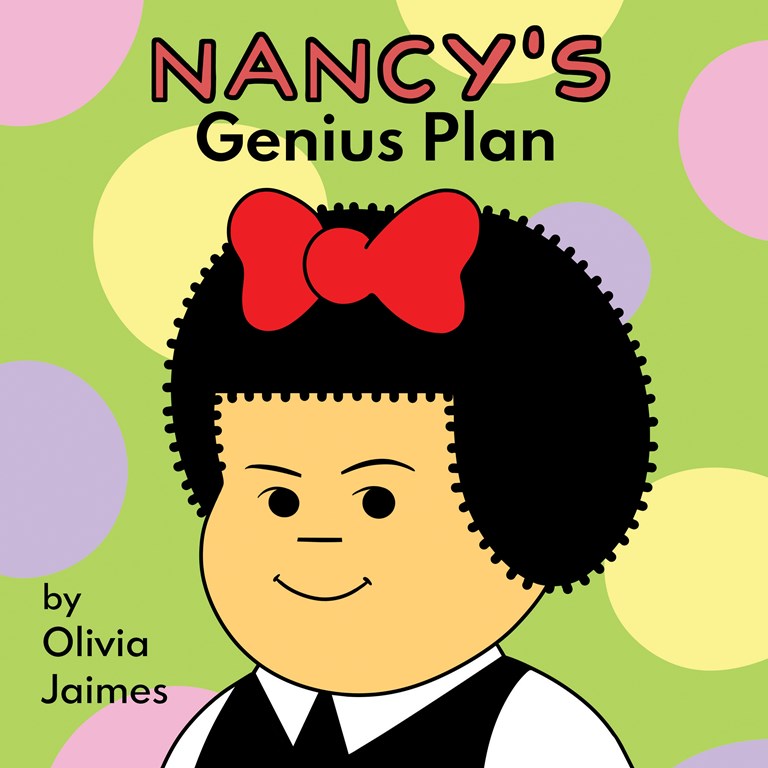Nancy who? Nancy Drew? Is this shorthand for Fancy Nancy? Nancy’s Genius Plan is a new board book staring Nancy. She’s the distinctively drawn character with the brillo-esque hair, polka dot skirt and sly grin. Her best friend is Sluggo, a buzz cut boy who could easily be confused for a know-nothing hooligan. Nancy was introduced in the 1930’s and had an almost constant presence in the now metaphorical comic strip page since then. In 2018 Nancy did take a two-month break for a slight modernization. The comic strip is funny, filled with dry observations and humor that appeals to kids and adults. Nancy’s Genius Plan has the same DNA, but it doesn’t take off in the board book.

A board book is one of those thick paged books with bright colors and lots of sight words for crawlers to pre-k kids to enjoy. They’ll gnaw on the pages, try to tear them from the spine, drool on it and hopefully learn some sight words. A simple character is a perfect narrator for a board book.
Nancy, however, is deceivingly complex. Many of the great laughs and jokes from the comic strip are ones that kids may not get. They’ll like the art, but might not laugh as much as older readers who get it.
That’s part of the problem with Nancy’s Genius Plan. Nancy is in the kitchen with Aunt Fritzi as she’s making cornbread for everybody. Through interacting with the book, the reader is able to move Nancy through the book to where she’s able to sneak into the room where the cornbread is. She can have the cornbread all to herself, but is that really the best thing to do?
For a character that’s been modernized cornbread is an odd choice to be a thing that a kid really wants. The fact that the character is classic, combined with them wanting cornbread sat oddly with our kids too. Granted, they’re older, but they both asked why she wanted the cornbread so badly.
The vocabulary in Nancy’s Genius Plan is also too big for board book audiences. The colors will capture their attention, but most of the words are ones that they won’t be able to read. I liked that fact that readers move the book and shake the pictures to have Nancy get past the obstacles. These are done in a Monster at the End of This Book fashion where Nancy acts as a narrator and the reader sells the illusion to younger audiences.
The humor and heart of the current comic strip are here. It’s the format, in this case the board book that doesn’t work for the story. It’s odd to say that the story in a board book doesn’t work, because they’re meant to be so simple. If you grew up with Nancy you’ll get this for your kids and really enjoy reading it. Those who don’t know Nancy will be slightly confused as to the mixed timeline that the character and story seem to be operating in.




 Facebook
Facebook Twitter
Twitter Flickr
Flickr GooglePlus
GooglePlus Youtube
Youtube